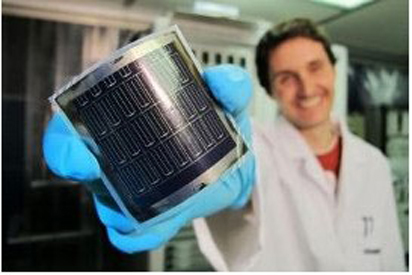Photovoltaic cell conversion rate reached 20.4% and set a new world record
2025-07-01 12:20:44
 On January 17, the Swiss Federal Materials Science and Technology Laboratory (Empa) announced a major breakthrough in solar energy technology. Their flexible substrate-based CIGS (Copper Indium Gallium Selenide) photovoltaic cells have achieved an impressive conversion efficiency of 20.4%, setting a new world record. This achievement has been officially verified by the Fraunhofer Institute for Solar Energy Systems ISE, marking a significant leap forward in the field.
This new record surpasses the previous best of 20.3% for glass-based CIGS solar cells, highlighting the potential of flexible substrates in next-generation solar technology. According to Ayodhya Tiwari, head of the Thin Film and Photovoltaic team at Empa, this development brings the efficiency of CIGS thin-film solar cells closer to that of traditional polysilicon panels, narrowing the performance gap between different types of solar technologies.
The improvement is not just incremental but represents a substantial step forward. In May 2011, the same research group had previously set a world record of 18.7%. The latest result, achieving 20.3% before hitting the new record of 20.4%, shows consistent progress and innovation in the lab.
Empa is now focusing on commercializing this technology, working closely with the Swiss startup Flisom AG. This collaboration aims to bring high-efficiency, flexible solar cells to the market, opening up new possibilities for applications such as building-integrated photovoltaics and portable power solutions.
The research was supported by the Swiss National Science Foundation and various technology partners, emphasizing the importance of public-private collaboration in advancing renewable energy solutions. As the global demand for clean energy continues to grow, innovations like this could play a crucial role in shaping the future of sustainable power generation.
On January 17, the Swiss Federal Materials Science and Technology Laboratory (Empa) announced a major breakthrough in solar energy technology. Their flexible substrate-based CIGS (Copper Indium Gallium Selenide) photovoltaic cells have achieved an impressive conversion efficiency of 20.4%, setting a new world record. This achievement has been officially verified by the Fraunhofer Institute for Solar Energy Systems ISE, marking a significant leap forward in the field.
This new record surpasses the previous best of 20.3% for glass-based CIGS solar cells, highlighting the potential of flexible substrates in next-generation solar technology. According to Ayodhya Tiwari, head of the Thin Film and Photovoltaic team at Empa, this development brings the efficiency of CIGS thin-film solar cells closer to that of traditional polysilicon panels, narrowing the performance gap between different types of solar technologies.
The improvement is not just incremental but represents a substantial step forward. In May 2011, the same research group had previously set a world record of 18.7%. The latest result, achieving 20.3% before hitting the new record of 20.4%, shows consistent progress and innovation in the lab.
Empa is now focusing on commercializing this technology, working closely with the Swiss startup Flisom AG. This collaboration aims to bring high-efficiency, flexible solar cells to the market, opening up new possibilities for applications such as building-integrated photovoltaics and portable power solutions.
The research was supported by the Swiss National Science Foundation and various technology partners, emphasizing the importance of public-private collaboration in advancing renewable energy solutions. As the global demand for clean energy continues to grow, innovations like this could play a crucial role in shaping the future of sustainable power generation.Suzhou Guangxuan Fasteners Co.,Ltd. , https://www.beinuofastener.com